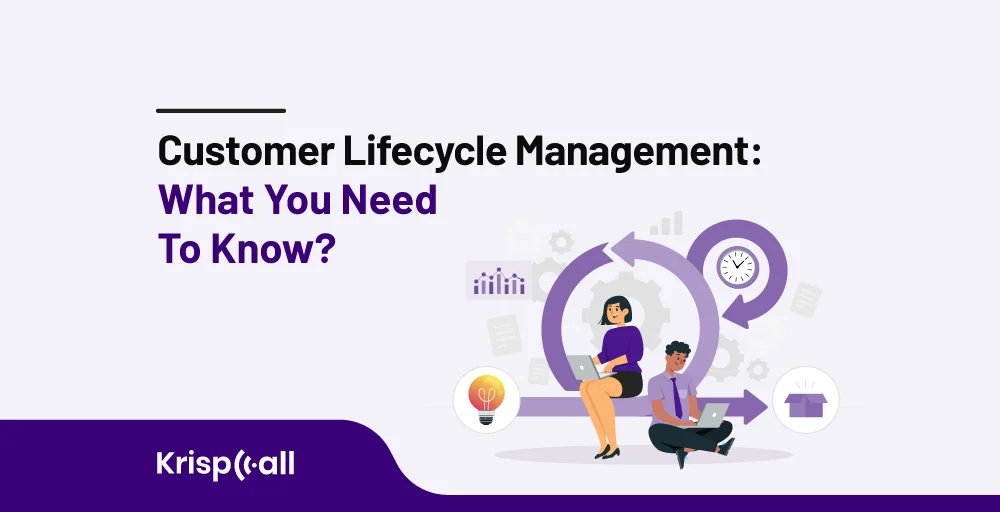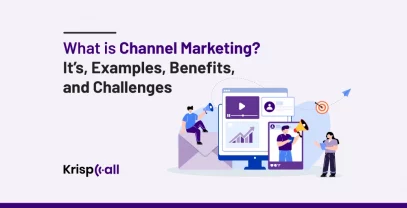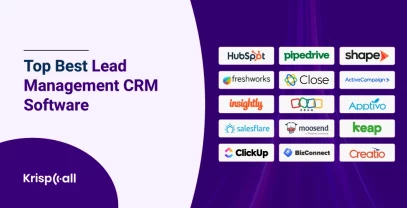Struggling 😔 to build a proper relationship with your customers? Or looking for ways to build a strong presence and bond with your customers?
This is where Customer Lifecycle Management (CLM) comes to 🙋your aid. It’s not just a fancy marketing term but is an actual strategic approach that helps you to deeply understand your customers, optimize their experiences, and build long-lasting relationships.
Many of you may be familiar with the term customer lifecycle management, even if you are new to this term, this guide will offer you the best answers to all of your questions about how exactly CLM works, and what are the benefits of implementing it.
🔑 KEY HIGHLIGHTS
- Customer Lifecycle Management (CLM) tracks and analyzes stages of the customer journey, from initial awareness to loyalty, to provide better support and retain customers
- Improved customer experience, enhanced customer lifetime value, and reduced customer acquisition costs are some of the benefits of customer lifecycle management.
- Awareness, engagement, consideration, conversion, retention, and bonding & advocacy are the stages of customer lifecycle management.
- Researching, identifying, mapping, setting clear objectives, leveraging data and analytics, selecting appropriate channels, measuring and analyzing performance, and continuously monitoring and refining are the best client lifecycle management strategies.
- Viewing from the customer’s perspective, tracking touchpoints, and uncovering needs are some of the best practices of customer lifecycle management.
What is customer lifecycle management?
Customer lifecycle Management (CLM) is the strategic process of managing a customer’s journey with your brand, from initial steps to post-purchase interactions. The customer lifecycle process takes place way before your customer starts making purchases from your brand.

From introducing your brand to your audience with the help of different platforms like social media, website, etc to building a mutual relationship with them. The lifecycle of your customers advances in a proper step.
While many businesses often confuse customer journey with customer lifecycle, it is important to know that these two terms offer different perspectives. The customer journey covers all the interactions a customer has with your business, on the other hand, customer lifecycle refers to the progression of steps a customer goes through before, during, and even after they make a purchase.
No matter which product or service you sell, the process that customers follow is almost the same from brand to brand. CLM helps you 😀 track and analyze each stage of the customer lifecycle, assigning metrics to each step, and measuring your business’s success based on those metrics.
Why is customer lifecycle management important?
To stay competitive, it’s important to understand how you’re delivering customer experience as compared to your competition, and that is just what the customer lifecycle process does.
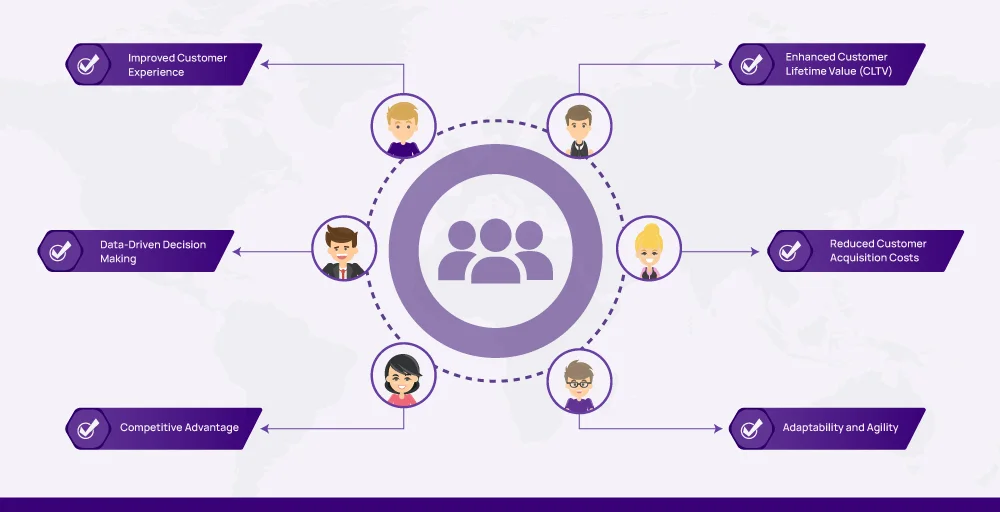
Customer Lifecycle Management is a crucial part of any business. Due to how the client lifecycle management process helps you to look deep into the customer journey, it makes it easy for you to optimize each stage of the customer lifecycle to offer them a better overall experience. So, by utilizing client lifecycle management across every stage you can always build a mutual and healthy relationship with your customers.
These are some of the points to indicate why customer lifecycle management(CLM) is important for businesses:
- Improved Customer Experience: One of the major uses of client lifecycle management is to offer your customers the best experience. Throughout your customer’s time within your business, the lifecycle process ensures a seamless experience for them. This includes providing all the necessary information at the awareness stage, addressing concerns during consideration, and offering post-purchase support. Customers who experience important are more likely to come back and this is what the client lifecycle exactly does.
- Enhanced Customer Lifetime Value (CLTV): Clients who are satisfied with your brand tend to stay longer and contribute more to your overall revenue in the long run and client lifecycle exactly does that. It helps you to retain customers and encourage repeated business with them.
- Data-Driven Decision Making: Data is a valuable asset in business and with the help of these data you can collect any necessary data you require to provide data-driven customer service at each stage. This data helps you to make precise decisions about marketing campaigns, product development, and tips for customer service strategies.
- Reduced Customer Acquisition Costs: Acquiring new customers can prove to be cost-effective but with a lifecycle management process you can simplify such costs. With the help of a lifecycle management process, you can retain existing purchasers meaning you can spend less on acquiring new ones, improving your overall profitability.
- Competitive Advantage: In a marketplace with numerous competitors, exceptional customer experiences can play a major role in differentiating your brand from others. By implementing effective user experience across every stage, you can create a competitive advantage by building customer loyalty.
- Adaptability and Agility: Customer needs and expectations can evolve as time goes on. So, by making use of CLM you can easily get insights into the changes that are occurring, allowing you to adapt your strategies and stay agile in a dynamic market.
What are the different stages of customer lifecycle management?
A customer’s journey within a brand is more than a simple journey from product selection to purchase. Instead, the lifecycle is filled with numerous touchpoints, interactions, and moments that directly or indirectly influence their perception and loyalty toward the brand.
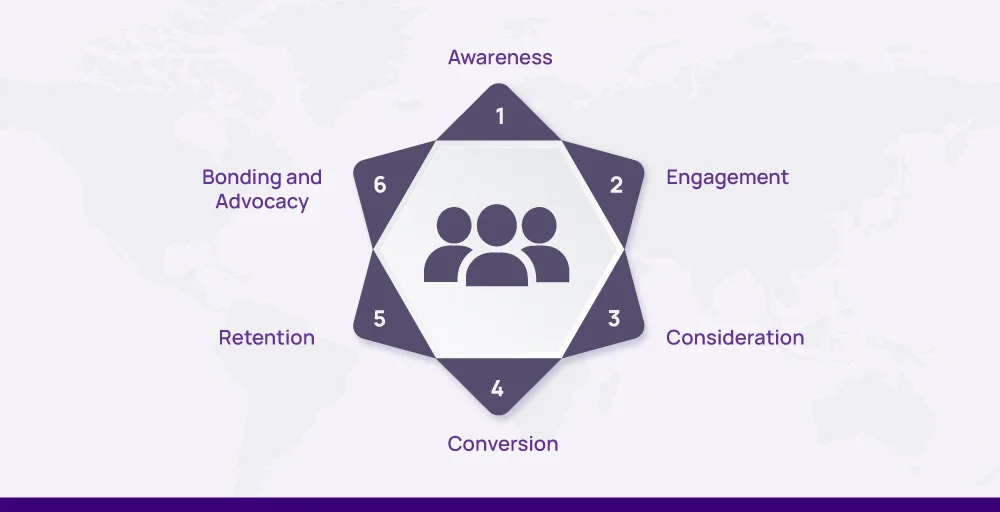
So, you must always be familiar with the different stages a customer goes through within your brand. Knowing about the different stages your clients go through will help you point out all the necessary things you should amend or focus on for a better customer experience and conversion rate.
Here’s a breakdown of the common stages and their purposes:
1. Awareness
This is the initial part where potential customers become aware of your brand and the value it offers to them. As the digital world is vast, this process can take place through different methods like marketing campaigns, social media mentions, or word-of-mouth recommendations.
During this stage, you must be familiar with the voice of the customer and attract them by presenting a product that fulfills their need. This may include a list of problem-solving products or something unique that can capture the attention of the customer.
For example, if the potential client is becoming aware of your brand and the solutions you offer, even though they might not be ready to buy anything yet. This initial brand awareness is the foundation for your future stages in the client lifecycle, where they might consider your products or services as they move towards a purchase decision.
2. Engagement
After catching the customer’s attention comes the process of engagement. Here leads start to actively research and explore your brand checking out the things you offer them. During this stage, you need to keep a potential customer invested and curious through proper engagement.
Throughout this stage, you can engage them via informative content, personalized offers, or social media interactions. The goal here is to provide value and build, nudging them further down the buying journey.
3. Consideration
In the third stage of the customer lifecycle, the potential users start to consider whether is this the right brand for me. This question will lead them to consider many factors like:
- Does it fit their needs?
- Does it fit their budget?
All this question eventually leads your customers to start evaluating your products or services against other competitors out in the market. This type of question results in your customer looking out through different customer reviews and ratings, testimonials from your existing customers.
During this stage, customers will probably have many questions so you should always be ready to offer the suitable answer they are looking for.
4. Conversion
This is the moment of truth. After going through all three steps your client will finally decide to become your customer. This stage can take place through your website, a physical store, or even through partnerships with other businesses.
For example, imagine someone browsing an e-commerce website for athletic shoes. They’ve been researching different brands and features for weeks. As a result of reading detailed product descriptions and comparing product reviews, they decide to add a specific pair of shoes to their cart. This act of adding the shoes to the cart signifies the conversion stage, as the potential clients has moved from simple browsing to expressing a clear intent to purchase.
5. Retention
Now even though the customer has officially made their purchase from your brand it doesn’t end there. The goal after purchase is to keep them attracted to your business.
You must keep providing excellent customer service, offering loyalty programs, and ensuring a positive post-purchase experience. This will help your brand to build a positive image within the customer’s circle eventually leading to staying connected with your brand.
6. Bonding and Advocacy
When you reach this stage of the customer lifecycle then your customer has become your number one ally. They will keep promoting your brand by various forms such as leaving positive reviews, recommending your products to others, or by word of mouth.
This stage is crucial for sustainable business growth, as loyal customers contribute significantly to your brand reputation and overall success. So, continue to build and nurture your relationships with these loyal customers.
How to create the best customer lifecycle management strategy?
A proper strategy is necessary no matter what field you may be in and within the client lifecycle management process it is no different. A well-defined client lifecycle strategy is essential if you are looking to build a long-lasting customer relationship.
Below are some of the strategies you can follow to create the best customer lifecycle management:
1. Research and Identify your targeted customer
Determining who you are trying to reach, even before your customers discover your brand, products, or services is the first strategy you should make. Always identify what your customers are looking for by conducting various market research, analyzing customer demographics, and creating buyer personas to paint a clear picture of who you’re trying to reach.
2. Mapping the Customer Journey
Visualizing the different steps your customers have to go through from the initial stage to post-purchase interaction can be beneficial in identifying all the problems they may face. All the pain points indicated while visualizing such things can help you to amend all the wrongs even before they reach your customers.
3. Set Clear Objectives
Different brands have different objectives whether it may be to increase customer retention rate, improve brand loyalty, or boost customer lifetime value. Setting a clear objective will help you to focus more on such factors which will play a crucial role in the long run. So keeping a clear image of your objective can be the greatest help you need to improve your business.
4. Leverage Data and Analytics
Data is your trustworthy ally in customer lifecycle management. So, make the best out of it by collecting all the necessary customer data such as purchase history, website behavior, etc., and utilizing them to understand all your customer needs and preferences. Use all available tools such as call analytics tools to identify trends and optimize your marketing efforts accordingly.
5. Selecting Appropriate Channels
With how the online world has upgraded with time, customers can easily engage with brands through various channels such as email, social media, phone, etc. So, always remember to choose the right channels your targeted audience is available in. By knowing which channel they are in, you can customize your communication pattern accordingly.
6. Measuring and Analyzing Performance
Tracking and analyzing key metrics like customer acquisition cost (CAC), customer lifetime value (CLTV), and churn rate can be beneficial in pinpointing any aspect that may be causing problems. So, always measure and analyze the performance to unleash your brand’s ups and downs.
7. Continuously Monitor and Refine
The customer journey and customer behavior are constantly changing from time to time. So, regularly monitoring your customer management strategy can play a crucial part in indicating what changes are occurring in the current market. Monitor the changes, be open to adapting to new trends, and refine your approach based on ongoing data and customer feedback.
What are the best practices for customer lifecycle management?
Customer lifecycle management is all about fostering long-lasting, profitable customer relationships.
Here are some key best practices to ensure your customer lifecycle strategy thrives:
- Always walk through the customer journey from the customer’s perspective to identify any areas for improvement which can lead to a smooth shopping experience.
- Keep monitoring how customers interact with your brand across various channels such as websites, social media, email, etc. This helps you to understand their preferred communication methods.
- Engage with customers throughout their journey to discover their needs, wants, and hidden desires to tailor your offerings and communication accordingly.
- Analyze customer behavior data to understand what resonates and what falls flat. Use these insights to optimize your approach at each stage.
- Enable self-service options for your customers to address their needs efficiently and inspire them to find solutions independently.
Conclusion
Customer lifecycle management is a must-know process if you are looking to scale your business further by forming a mutual connection with your customers. Utilizing it properly will help you to understand your customers, anticipate their needs, and provide exceptional service at every stage of their journey.
By switching to CML, you will be one step ahead of your customer in every aspect of customer satisfaction. With the support offered by CML, you will see the difference in many aspects such as increased customer satisfaction and loyalty.
So, are you ready to transform your customer interactions and reach new heights?😉 Start implementing a strategic CLM approach, and watch your customer relationships take a positive turn.
FAQ
1. CRM vs CLM what are the differences?
CRM stands for Customer Relationship Management while CLM stands for customer lifecycle management. Many brands view these two terms as the same but in reality, it is different.
The main difference between these two software is that CRM is mainly aimed at managing the company’s relationship with people, users, with potential customers, whereas CLM is aimed at document management, covering the document lifecycle from start to finish.
Thus, while CRM offers a wealth of means and processes for interacting with users, CLM proposes an improvement in the interaction of these users with the documents, which are used almost daily by many departments in companies
2. How do I implement Customer Lifecycle Management in my business?
Customer lifecycle management can prove to be a great asset for your business in the long run. So below are some of the lifecycle management steps to implement in your business:
- Understand your customer: Understanding your customer’s needs and requirements can help you to tailor your engagement process and products.
- Map the Customer Journey: Mapping your customer’s journey helps you pinpoint key touchpoints that can play a crucial part in optimizing and building strong customer satisfaction and loyalty.
- Segmentation: Developing detailed buyer personas and segmenting customers based on demographics and pain points can make it easy for you to target customers effectively.
- Personalization: By leveraging customer data to create tailored messages and offers that speak to individual customers, can provide personalized experiences that build trust and engagement.
- Engagement Strategies: Providing relevant offers and content from time to time makes it more fun for customers to come back again.
- Feedback: Listening to feedback offered by customers makes it easy for you to know and improve the points that are causing problems.
3. How can I measure the success of my CLM strategy?
To measure the success of your CLM strategy, you should track key metrics at each stage of the customer lifecycle:
- Awareness Stage: In this stage, it is crucial to track metrics that indicate the effectiveness of your efforts in attracting new customers. These metrics encompass website traffic, social media engagement metrics like likes, shares, and comments, as well as brand awareness surveys.
- Purchase Stage: After the awareness stage comes the purchase stage. Through this stage track all the metrics that highlight buyer’s behavior, conversion rate, average order value, and shopping cart abandonment rate.
- Loyalty Stage: During this stage, you should focus on customer retention and advocacy. Always track customer retention rate, customer loyalty and willingness to recommend, and customer lifetime value which indicates the total revenue a customer brings to your business over time.
5. What are the benefits of customer lifecycle management?
Here are some of the benefits customer lifecycle management offers for your business:
- Enhanced customer experience.
- Increased customer lifetime value.
- Improved customer satisfaction and loyalty.
- Data-driven decision making.
- Reduced customer acquisition costs.
- Competitive advantage.
- Adaptability and agility.

